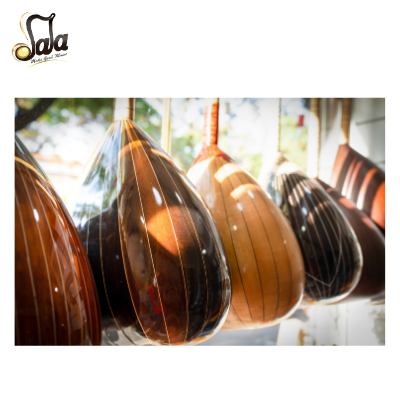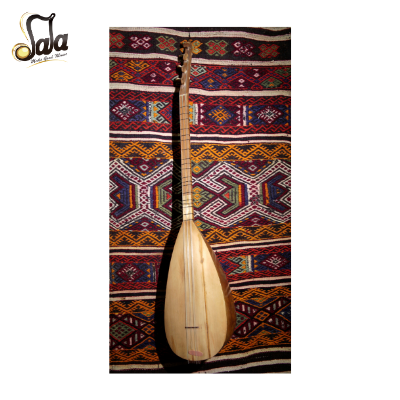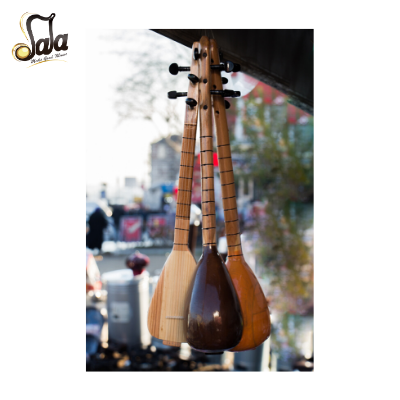All about Turkish Saz - Baglama

Saz, which is used in many music genres, especially Turkish folk music, in the form of kopuz, which is one of the oldest instruments of Turks, to date. Today, baglama is used all over the country, especially in Anatolia, as a cultural product and as a musical instrument that expresses the most burnt melodies. There are many different varieties of saz, which is a stringed instrument.
What are the features of Turkish saz?
Although a single instrument comes to mind when it comes to Turkish saz, it actually has many different types. Saz with different types, each type has its own characteristics. Known as the largest reed in the baglama family, the reeds have a total of 12 strings. For this reason, it is also called a 12-string instrument. This instrument is mostly played in the fights or feasts in the squares. The playing of the reeds that are usually tuned to the note la also requires great skill.

Another type of baglama is the type known as a divan instrument. The main feature of this genre is that it can be tuned even to high-pitched sounds. Compared to the field instrument, there may be about 4 more sounds. Divan reeds usually have 7 to 9 strings. The Turkish saz, which is called the baglama and gives its name to the species, has a number of frets between 17 and 24. Baglama, which has two different types as a short handle and long handle, can be played solo in many kinds of music. It is also possible to reach higher-pitched sounds when compared to the Divan instrument.
You can also like: How to Tune Long Neck Saz-Baglama
Which wood is best for Turkish saz?
The pulley of Turkish saz is made of different trees. It is paid attention that the trees used in the production of binding are solid trees that will not change shape and deteriorate over time. It is very important to use quality trees to get good baglama. The trees to be used in the saz production must be dry. Drying of the tree naturally, that is, leaving it to dry on its own, allows the binding to be obtained to be of higher quality and to be used longer. Apart from this, the trees to be used in saz production can also be dried in a short time by the firing method. In Turkish saz production, different trees are used in each part. The most suitable tree for the trunk of the baglama is Mulberry and Mahogany trees. Mahogany and Spruce trees for cover; Mahogany, Beech and Walnut trees are very useful for the stem. Trees, such as poplar, are not preferred in the production of baglama since they are not durable enough.

How to play Turkish baglama saz?
Playing baglama saz is a situation that is difficult to express with words. People who want to learn how to play baglama should first be confident of their willingness. Afterward, they should obtain a short or long-handled mooring that suits them. This baglama saz should be made from the tuning settings. It is not possible to get good quality sound from a baglama without tuning settings. Notes are the most important issue in baglama as in many musical instruments. A lot of practice must be done in order to play well. Those who have the opportunity can enroll in a one-to-one course. For those who do not have this opportunity, there are many online Turkish bağlama saz courses online. They can improve themselves by following these courses.

You can also like: Tips to Buy An Electric Saz
Best known Turkish saz artists
Anatolia, where the Turkish baglama culture reached its peak and still exists today, has trained great masters in this field. Some of these masters are:
- Aşık Veysel Şatıroğlu: Veysel Şatıroğlu, who was born in Sivas, is one of the biggest baglama masters of Anatolia. Veysel, who lost his eyes due to chickenpox when the child was young, started to sing and sing folk songs with his little instrument that his father bought. While singing the sayings of the lovers of the previous period, he also voiced his own folk songs along with his ripening period. The most famous song of Aşık Veysel, whose lyrics are not a philosopher, is “Kara Toprak”.
- Neşet Ertaş: Neşet Ertaş, who recently passed away and considered to be the last abdal, was born in Kırşehir. Neşet Ertaş, who was also a great saz master, learned to play the saz in his first school years, and he sang and played saz at weddings and organizations with his father. Neşet Ertaş, who is known with the nickname of the steppe, has performed dozens of songs throughout his life.

- "Muhlis Akarsu: Akarsu, who was born in the Kangal District of Sivas, is one of the most valuable instrumental masters from the Alevi-Bektashi tradition. In addition to the sayings of parents such as Yunus Emre, Pir Sultan Abdal, and Hacı Bektaş-ı Veli, a large number of Turkish songs belong to him. It brought to Turkish culture.
You can also like: https://salamuzik.com/blogs/news/difference-between-short-neck-and-long-neck-baglama-saz





Great informations. I would like to buy one!
It has been a great content for real Turkish saz lovers
Leave a comment